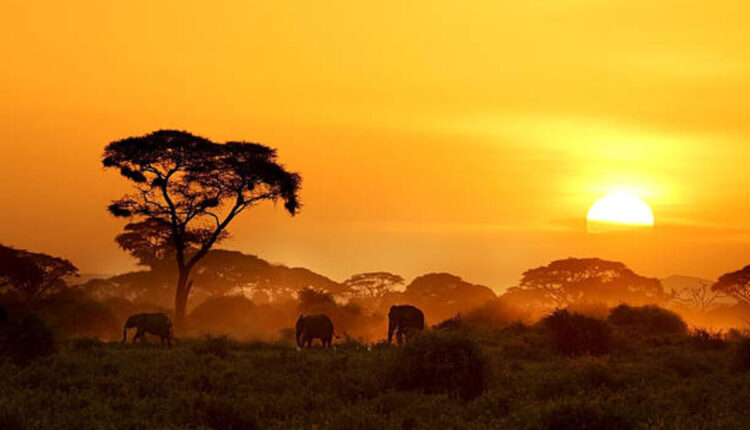Visit Prehistoric Sites in Kenya
Visit prehistoric sites in Kenya for an unforgettable glimpse into its past. These archaeological locations contain fossilized remains from early human ancestors that explain our evolutionary path. Check out the Best info about Immersive travel experiences in Kenya.
These ancient sites are some of the most significant anthropological excavations in East Africa. Leakey’s excavations at these ancient sites have resulted in the discovery of hand axe tools and many other anthropology-related artifacts.
Koobi Fora
Paleontologist Richard Leakey performed a flying survey over Lake Turkana (then known as Lake Rudolf) in 1968 and discovered unique rock formations on its eastern shore, now called Koobi Fora. A prominent ridge outcrop from Pliocene and Pleistocene sediments that contained fossilized terrestrial mammals–including early hominins–was discovered here. This feature has since been gradually eroded into badlands terrain by intermittent rivers draining into the Lake Turkana basin in 1968 and found rock formations on Koobi Fora in its present location.
Since 1974, researchers with the Koobi Fora Research Project have discovered more early human fossils at Koobi Fora than anywhere else worldwide. These fossils and their climate context provide unique insights into humans, other primates, and other species’ evolution within the Turkana Basin, particularly their relationships to Homo.
The KFRP has also contributed significantly to our understanding of environmental change over time in the Turkana Basin. Scientists have unearthed evidence of significant faunal turnover five million years ago when rainforest habitats gave way to grassy savannas.
KFRP continues its research of fossils and geological history at Koobi Fora and throughout the Turkana Basin while working to promote conservation measures. Furthermore, this arid site hosts the Koobi Fora Field School, which trains many students in paleoanthropology techniques.
Hyrax Hill
Hyrax Hill Prehistoric Site and Museum are located in Nakuru County, 4 kilometers from Nakuru Town and half a kilometer from Lake Nakuru, and were declared national monuments and opened for public visit in 1965. A former farmhouse ceded to the monument by its owner now serves as its museum housing artifacts from various sites throughout the central Rift Valley region, such as lithic tools, glass-like obsidian stones, stone platters, and remnants from an Iron Age settlement site.
Louis Leakey discovered Hyrax Hill in 1926 but didn’t excavate it as he worked on other archaeological sites. Later, when Mary Leakey returned with him, they started excavations at two areas known as Site I and Site II; unfortunately, there wasn’t an effective carbon dating technology at the time, so it was hard to ascertain their exact ages.
Both sites feature C-shaped stone hut foundations and circular tumuli, and two burial pits near the top of a hill which contain male skeletons most likely decapitated and organized according to gender. Based on beach sand evidence, both sites were likely once part of an enormous lake that extended from Lake Elmentaita around 8,500 years ago.
Olorgesailie
Olorgesailie is one of the best-dated sites for early prehistoric activity, dating back 1.2 million years. Palaeoanthropologist Rick Potts from the Smithsonian Institution Museum of Natural History and his colleagues have researched this site for decades in partnership with the National Museums of Kenya.
Their work has revealed fossils and stone tools, including an impressive collection of handaxes. Additionally, the site hosts numerous animal bones, which show a varied diet comprised of baboons, elephants, zebras, hippos, and multiple fish species.
Olorgesailie Basin fossils demonstrate frequent periods of drought and flooding within this section of the Great Rift Valley, creating shifting environments for early hominins and other species alike. These climate fluctuations ultimately drove people in search of more secure living conditions, just like we do now.
Olorgesailie may have been especially attractive to early hominins due to six independent factors. These included abundant workable stone; being near a lake that provided water; it being the only path allowing large animals to travel between east and west; nearby high elevation areas offering potential lookout points; few predators and relatively few dangerous ones residing in its sediments; as well as recording magnetic signals that allow scientists to date fossils and artifacts.
Kariandusi
Kariandusi was one of Kenya’s first revealed palaeontological treasures when discovered in 1928, dating back to the Early Stone Age (or Lower Paleolithic period), roughly between 2.6 million years ago and 280,000 years ago – during this period, some of our most iconic human ancestors developed such as Australopithecus afarensis, Paranthropus boisei, Homo habilis (aka “Handy Man”) and Homo erectus.
This site is located on the eastern shores of Lake Elementaita, part of a system comprised of Lake Nakuru, Elementaita, and Bogoria that formed after volcanic activity on the floor of Rift Valley was coupled with tectonic forces and eventually expanded by Lake Nakuru.
Kariandusi Prehistoric Site is widely known for its impressive assemblage of Acheulean handaxes sent to museums worldwide for display. Due to the sheer quantity found, it was once called an “axe factory.” There have been various theories concerning Kariandusi, such as why wear on its edges differs from other sites or whether or not it functioned as a factory.
Hyrax Hill Museum depicts a prehistoric seasonal settlement that existed at least 3,000 years ago, located on a former farmhouse owned by the late Mr. A. Selfe and named for the abundant population of hyraxes that thrived there.
Read also: A Journey Through History: The Best Places to Visit in Murshidabad

